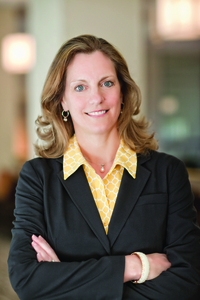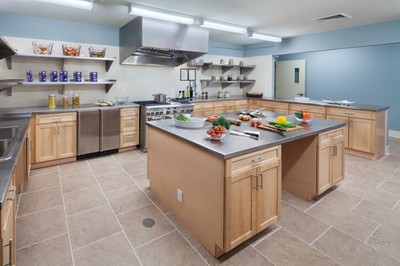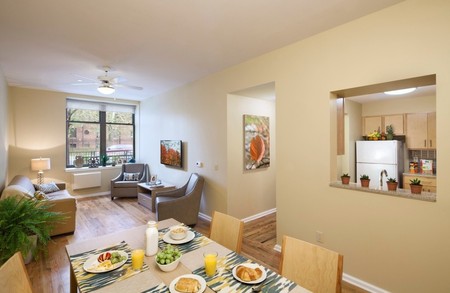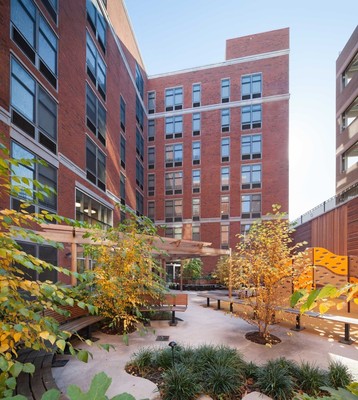Think about the place where you were born.
Was it clean? Not just perfectly sterile... more like whether rotting items were strewn about, drawing disease-carrying insects.
Was it safe? Not just from the random pickpocket... more like whether drive-by shootings or terrorist attacks were a constant fear.
Now ask those same questions about the place where you grew up. And about the places where you live and work.
Answers to such questions are the building blocks of what's known as your social determinants of health. As further explained by the World Health Organization, these are the economic and social conditions that influence the health of people and communities. They are shaped by money, power and resources, all of which are influenced by policy choices.
Wrong ones can make you sick or keep you from getting healthy. They are barriers to productive, successful lives.

The numbers speak to Enterprise's success. This nonprofit group has invested $18.6 billion into communities around the country. It has helped create nearly 340,000 homes. It's lifted up millions of people, from the families in those homes to their offspring who've been sent down a new path.
Terri Ludwig is the president and CEO of Enterprise, and it's my pleasure to turn this conversation over to her.
***
"We were sick all the time."
That's how Elizabeth Melendez describes her family's time living in a cramped one-bedroom apartment in New York, where they coped with unreliable heating, poor ventilation and an infestation of roaches and vermin -- all hallmarks of low-quality housing. These conditions triggered full-blown asthma for Elizabeth, her son and her twin daughters.
"I was always on prednisone," she said. "We couldn't breathe at night."
Because mice would run around their stove, the family would eat out for all their meals, further hindering their health.
"I was just eating myself into seclusion," Elizabeth said.
Thankfully, this story has a happy ending. The Melendez family was able to move into a healthy, affordable home, where the combination of increased physical activity and the ability to cook nutritious meals -- without mice running around her stove -- not only reduced Elizabeth's asthma attacks, but helped her shed 35 pounds.

Cooking classes in this on-site teaching kitchen are available to the Melendez family and all of the building residents
But not all families are as lucky as the Melendez family.
In America today, health is an equity issue. Across the U.S., low- and moderate-income families are disproportionately living in substandard, unhealthy housing. Too often, they are living in homes that are overcrowded; constructed with toxic materials; disconnected from transit, grocery stores or health care; and in unsafe neighborhoods where children are forced indoors to stay out of trouble.
The results of this divide are tragically predictable, but striking nevertheless. Housing insecure families -- households paying at least half of their income on housing -- spend on average 39 percent less on food and 65 percent less on health care compared to otherwise stably-housed families. Life expectancy rate disparities can be decades apart.
Asthma, cardiovascular health, obesity, diabetes, mental and emotional stress: All of these things are significantly impacted by one's living environment. And while the health aspects of the housing structure itself are one thing -- such as the construction materials, the ventilation, the mold prevention and pest control -- the inequities extend beyond the roof and four walls.
For example, is the housing located near transit to encourage walking, or nutritious grocery stores to promote healthier eating? Is the neighborhood safe, where parents can comfortably allow their children to play outdoors?
Sadly, the answers to these questions are too often determined along an income divide. Dr. Melody Goodman of Washington University in St. Louis recently said, "Your zip code is a better predictor of health than your genetic code."
Fortunately, both housing and health professionals are gradually acknowledging this, and encouraging solutions are emerging.
Affordable housing developers, for example, are increasingly building with resident health in mind, often following the Enterprise Green Communities Criteria -- a platform created by Enterprise Community Partners for green, sustainable and healthy affordable housing development.
Additionally, partnerships between housing and health professionals (like that of Enterprise and the American Heart Association!) are inspiring new conversations and ideas. Partners are working to connect health care services more directly with families in affordable housing, bring healthier foods into low-income neighborhoods and create more walkable communities with transit options, so residents are empowered to move more and go see their doctor regularly.
There is a world of potential at this intersection of health and housing that we are just beginning to tap into, and I'm so excited about the future. But all of us need to embrace two fundamental truths.
First, this is an issue of social justice. Much attention is rightly given these days to income inequality in America and the dangers it poses. We must understand that one of these dangers is an ongoing health crisis for low- and moderate-income families -- one that is overwhelmingly shaped by their home environment.
And second, we must fully understand the connection between health and housing itself. Dr. Megan Sandel, a nationally recognized pediatrician (and Enterprise board member), calls housing a "vaccine." In other words, she views a healthy home as a form of preventative medicine.
The sooner we all realize that housing is a vaccine -- that our health is dramatically shaped by where we live -- the sooner we can help ourselves and those who need it most.

Affordable, green homes create healthier lives for Elizabeth Melendez, her children and many other families
Building photos by Vanni Archive Architectural Photography

